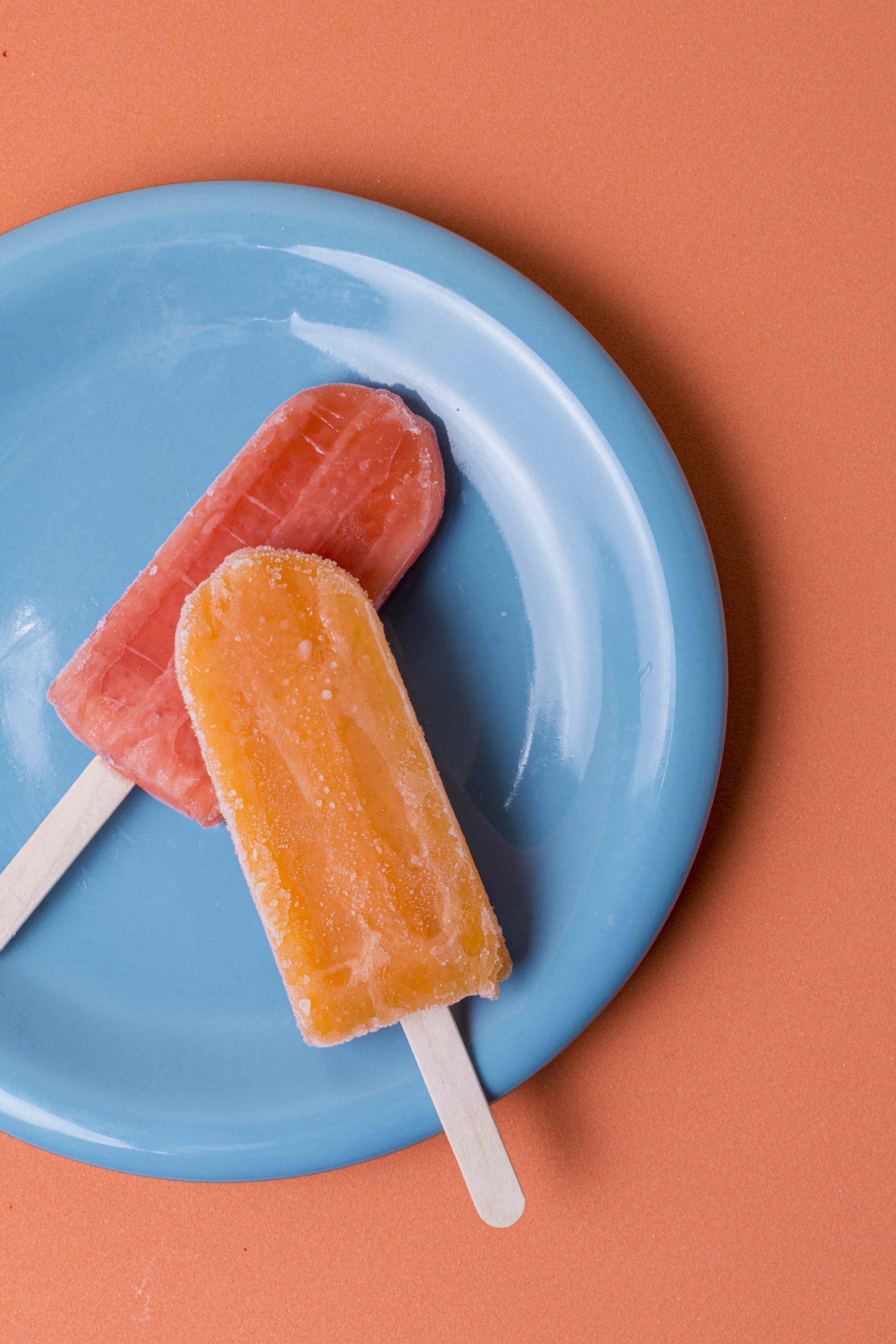Wondering if popsicles expire? Discover how long ice pops last, how to spot signs of freezer burn, and the best ways to store popsicles. We will discuss everything in this article, make sure you read it to the end.
Popsicles, or ice pops, are a refreshing snack that is delicious to enjoy on hot days, many people love them because they offer extraordinary freshness. Popsicles are available in several flavors, freshness and flavor choices make them a fun way to refresh the body.
When you find a popsicle neatly stored in the back of the refrigerator, of course you will wonder “how long has this popsicle been stored”, or you ask yourself “do popsicles expire?” Or, more specifically, “how long do popsicles last in the freezer?”
Here, we will explain in detail about the shelf life of popsicles, factors that affect quality and the best way to store them so you don’t have to worry about the popsicles you store.
Do Popsicles Expire? Here’s What You Need to Know
This is the core question that we must answer. The short answer is “yes, popsicles can expire.” However, they will not spoil as easily as other fresh foods. Popsicles are frozen treats that can prevent the growth of bacteria and fungi. However, over time, popsicles will of course slowly lose their flavor, texture and quality.

If you buy commercial popsicles, you will find a “best by” or “best before” date, this indicates the optimal time or best time to enjoy them. This means that after the date listed, the popsicles are still safe to eat, but the taste will have decreased and are no longer fresh.
Key Point:
Technically, popsicles do not expire, but they can lose their appeal and taste over time.
How Long Do Popsicles Last in the Freezer?
Depending on how they are stored, if they are stored at 0°F (-18°C) or lower, they will last a long time. However, for best results, it is recommended that you consume them within 6 to 8 months of purchase.
If you have ever stored your popsicles in the freezer for a long time, and are wondering if they are still good, it is important to check for signs of freezer burn, changes in texture and changes in taste.
The Shelf Life of Popsicles:
- If stored in the freezer at 0°F (-18°C), the shelf life can be between 6 – 8 months (best quality).
- If stored in a freezer with fluctuating temps, the shelf life is only between 3 – 4 months (diminished quality)
Over time, popsicles (even frozen) can experience:
- The formation of ice crystals on the surface, which is a sign of freezer burn.
- Changes in taste or fading flavor
- Changes in texture, making them icy or rubbery
The appearance of these signs does not mean that the popsicles are unsafe, but it will have an impact on reducing the experience of enjoying the popsicles.
Preventing Freezer Burn on Popsicles
According to USDA guidelines on freezing and food safety, freezer burn occurs when moisture evaporates from the food’s surface and forms ice crystals.
The effect of freezer burn is that the texture of the food becomes dry, in this case the texture of the popsicle is dry, the color fades and changes in taste to become less tasty.
How to Prevent Freezer Burn on Popsicles:
Keep the popsicles sealed, you can do this by keeping your popsicles in their packaging and making sure they are still tightly closed in an airtight container.
Maintain a consistent freezer temperature because fluctuating temperatures can cause ice crystals to form, this can increase the potential for freezer burn.
Store the popsicles on a flat surface, if you store them in the freezer, then make sure to place them flat on the freezer floor and this will help to freeze evenly. This will prevent excessive exposure to air.
How to Tell If Popsicles Have Gone Bad

When a popsicle has gone bad, it is certainly no longer safe to eat, its quality decreases and can cause unwanted effects. Here are some indications that your popsicle is spoiled or no longer fit to eat.
- A sour or unpleasant odor, especially in popsicles made from milk.
- The appearance of ice crystals on the surface of the popsicle, this indicates freezer burn.
- A change in color
- The taste changes, such as stale or unpleasant
If you find any of these signs or indications of spoilage, you should throw away the popsicle.
Storing Popsicles: Tips for Maximum Freshness
It is important to pay attention to proper storage methods because this affects the freshness and durability of popsicles as long as possible. We have provided some tips to help you store popsicles effectively. This is according to our experience when buying a lot of popsicles and we practice this storage method, the results are very satisfying because they can last optimally.
1. Store at a Constant Freezer Temperature
Store at a constant freezer temperature, 0°F (-18°C) or lower to keep popsicles frozen solid. Do not open the freezer door too much because it can disrupt the stability of the temperature.
2. Seal Popsicles Properly
Make sure your popsicle packaging is still properly sealed in an airtight bag or package. If the original packaging is damaged, then you must transfer them to a special freezer bag or you can also wrap them individually.
3. Avoid Overcrowding the Freezer
Avoid overfilling the freezer, this is important to prevent temperature changes and to ensure that air circulates well and evenly. This in turn will maintain a consistent freezing temperature.
4. Label and Rotate Your Stock
If you have multiple boxes of popsicles, it is important to label them with the date or type of popsicle. Place the boxes you bought first at the front so they are easy to reach.
Homemade Popsicles: How Long Do They Last?
Homemade popsicles that use natural ingredients such as fresh fruit, yogurt, or juice certainly have a shorter shelf life because they do not use preservatives. Unlike store-bought popsicles, which are known to last longer.
For best results, homemade popsicles should be used up within 2 to 4 weeks. After this period, they will most likely lose their original flavor, fade in color, and also in texture. Especially if you do not store them properly.
Also read: Do Smarties Expire?
Storing Homemade Popsicles:
It is important to store homemade popsicles properly because they have a shorter shelf life. Use airtight bags to store them to prevent freezer burn.
Wrap your homemade popsicles individually so that the quality is better maintained, especially if you make them in large quantities.
Frequently Asked Questions About Popsicles Shelf Life
Can I eat popsicles that are a year old?
Yes, popsicles that have been stored for a year are probably still safe to eat as long as they are stored properly. However, there will be changes in taste, texture and color.
Is it OK to refreeze melted popsicles?
It is not recommended to refreeze melted popsicles, especially if they have been at room temperature for a long time. This can affect their texture and safety.
Are sugar-free popsicles more prone to freezer burn?
Yes, sugar-free popsicles freeze harder and are more likely to cause freezer burn.
How can I extend the shelf life of popsicles?
You can extend the shelf life of popsicles by storing them in an airtight, well-sealed bag. Also, make sure your popsicles stay at a stable freezing temperature. Temperature changes can affect popsicles and open up the opportunity for freezer burn.
Conclusion
Popular ice lollies technically do not expire, but changes in taste, texture, and color do occur over time. This means that storing them for too long can affect the overall popsicle even if they are still safe to eat. Proper storage can help maintain their quality and shelf life. But if you care about the best taste, then you should consume them within 6 to 8 months of purchase.
If you find a popsicle in your freezer that you have had for a while, look for signs of freezer burn, and check the taste. It is likely still safe to eat, but for the best popsicle experience, you should buy a new one.

